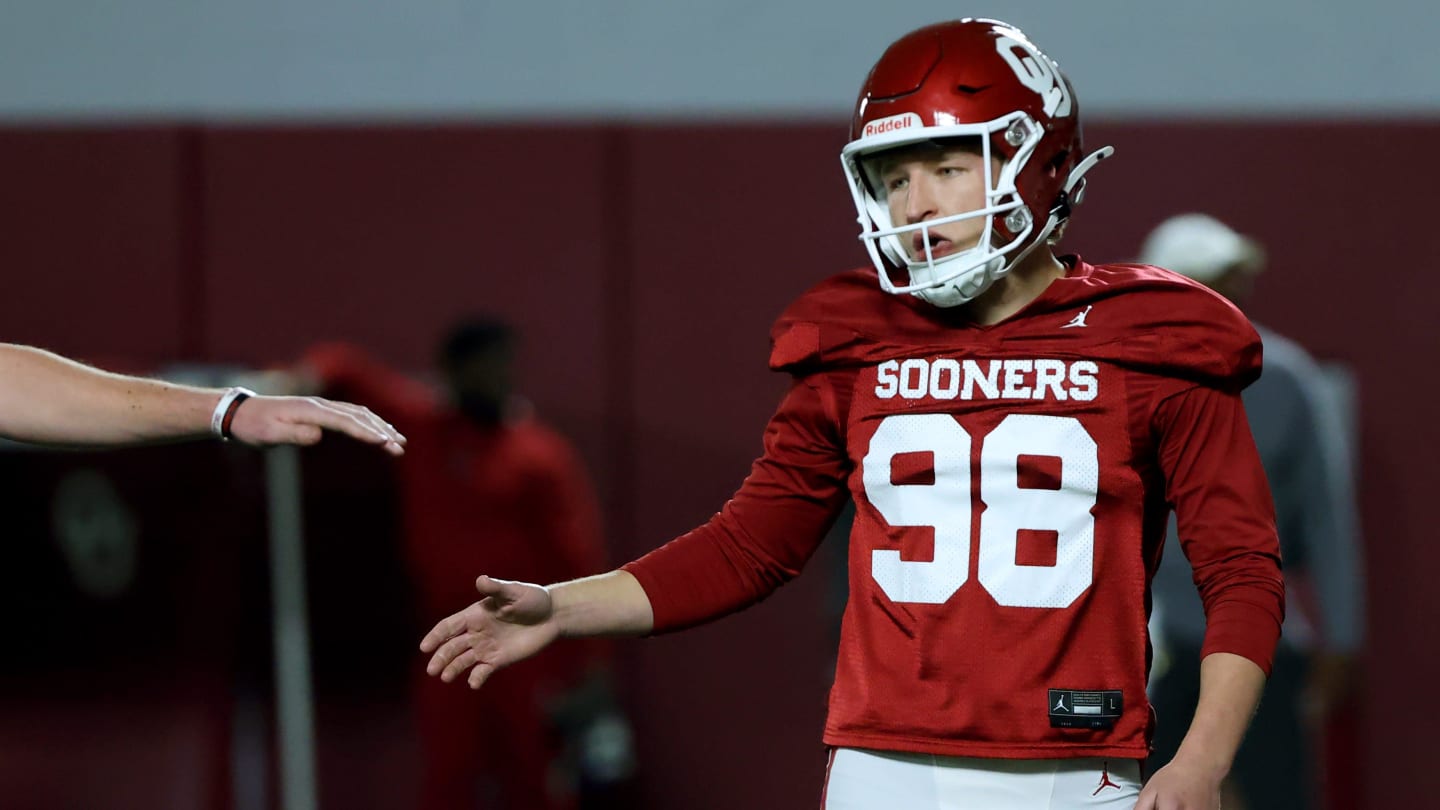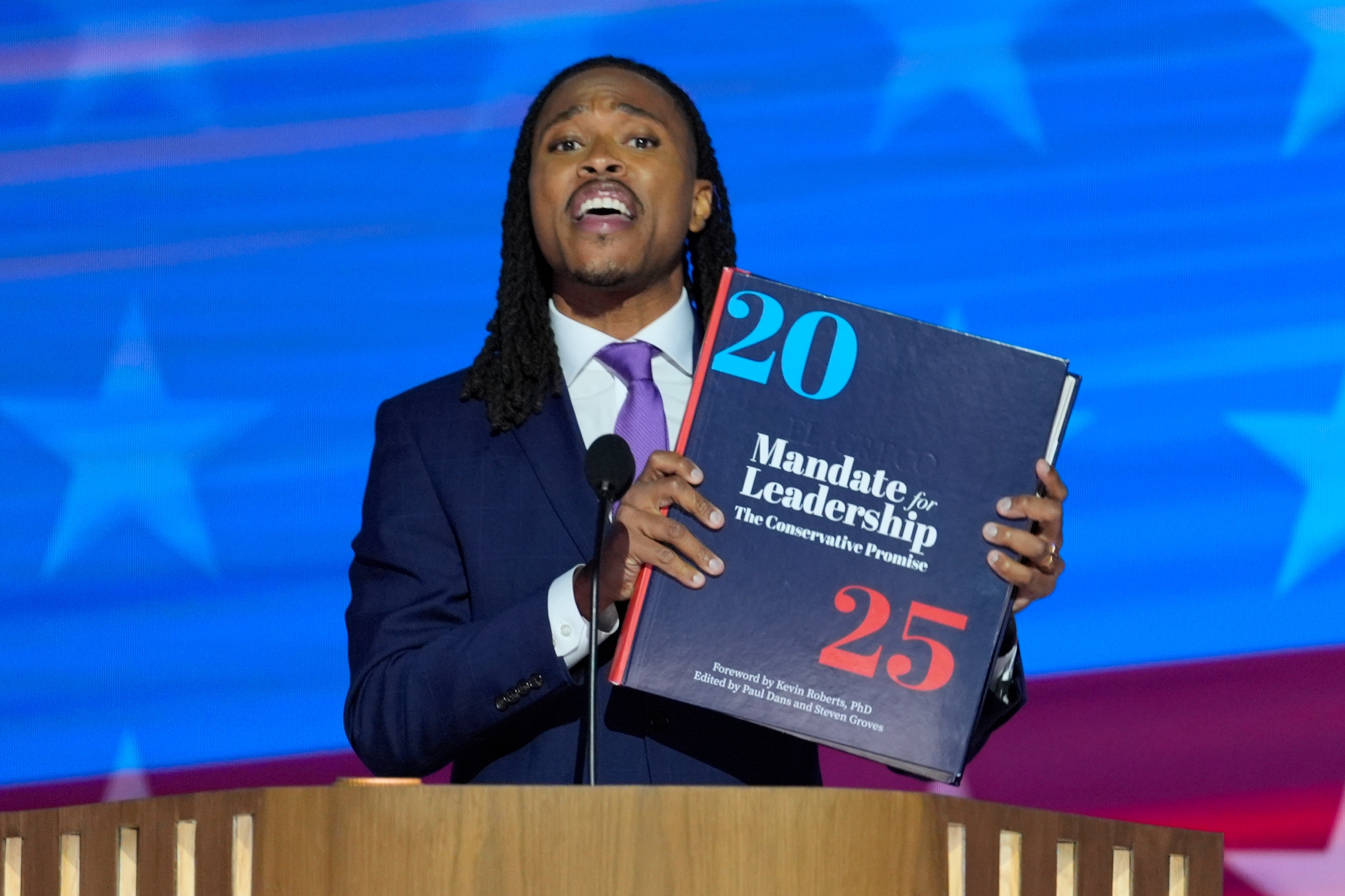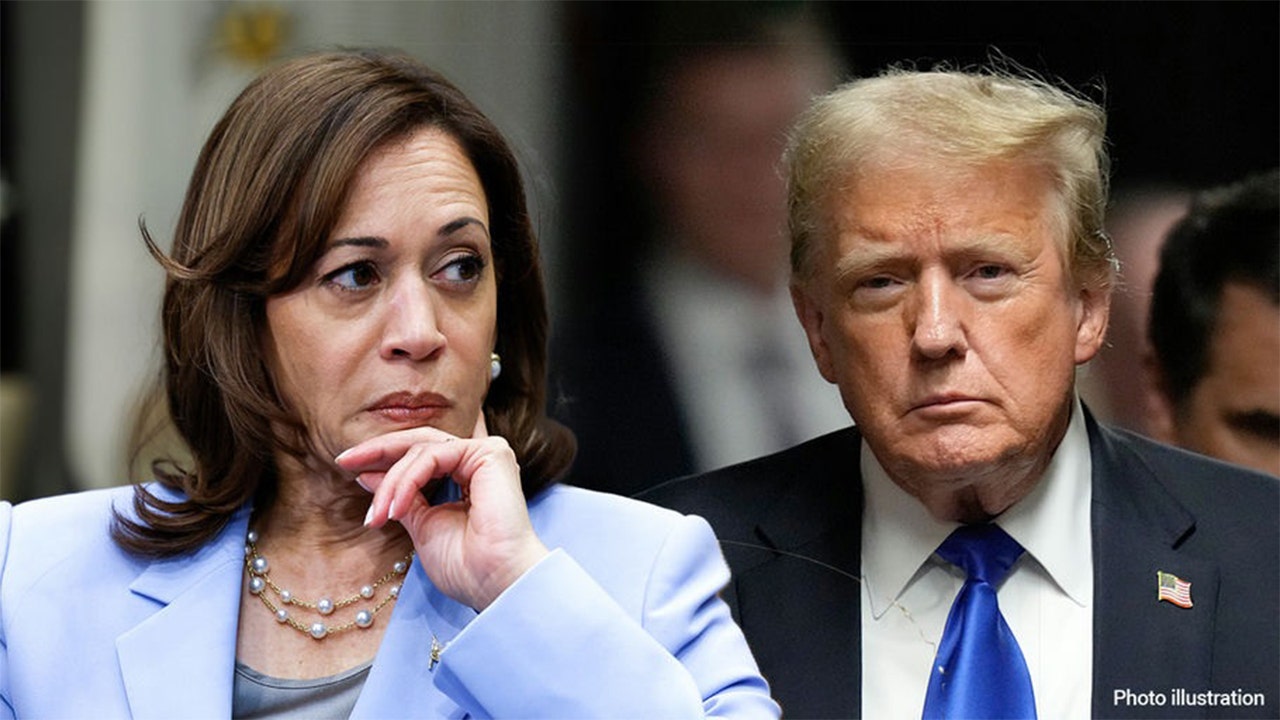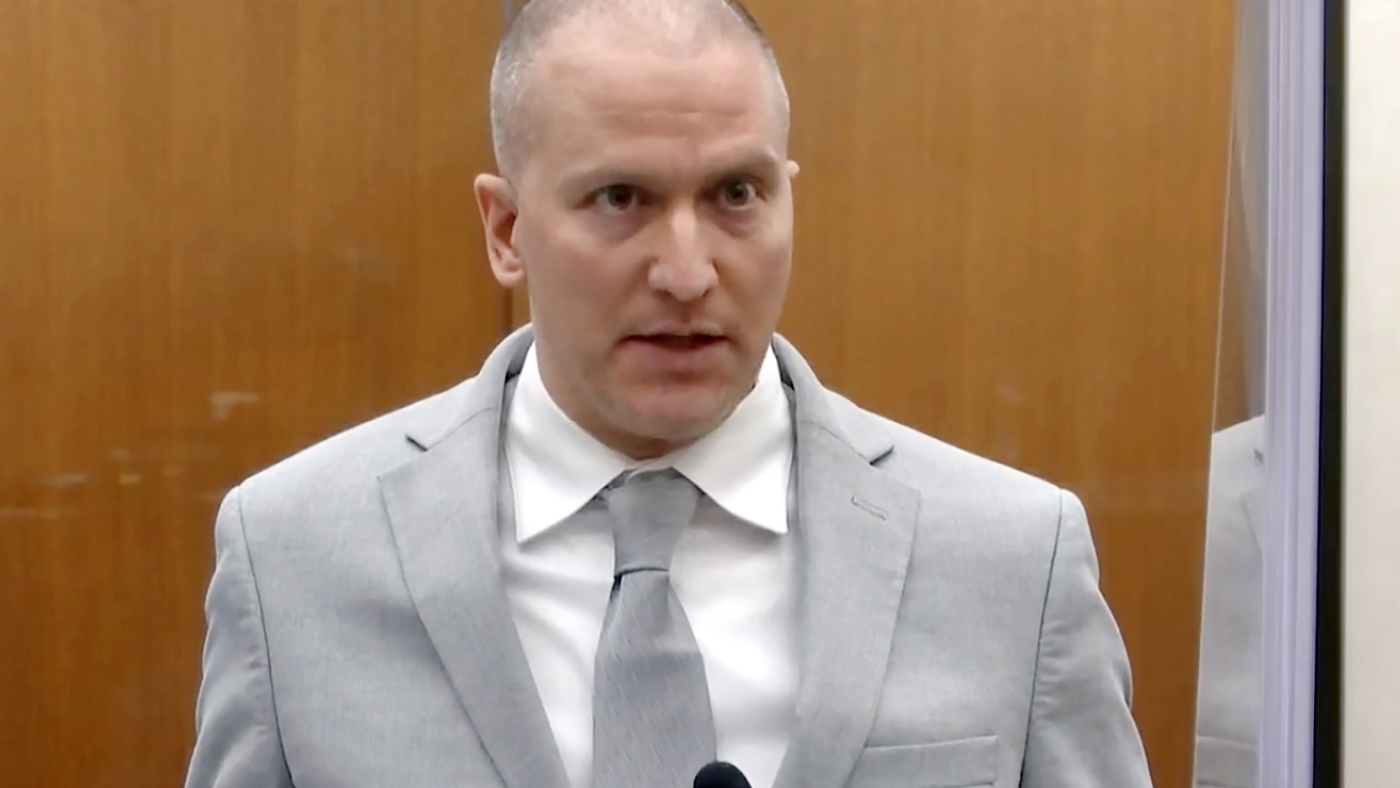Sports
Cowboys training camp hotel catches fire during preseason of chaos
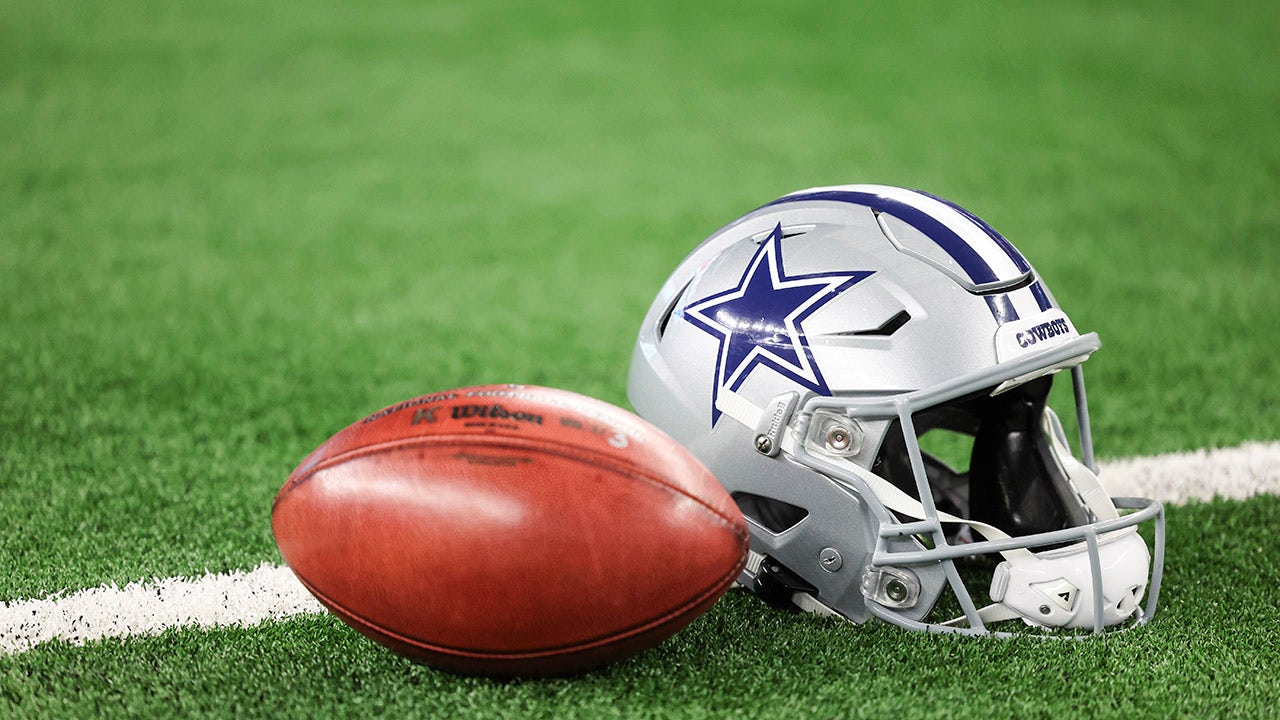
The Dallas Cowboys seemed to have multiple fires to extinguish during training camp in regard to its roster. But they had an actual fire to deal with on Tuesday.
With just two more workouts before training camp breaks, the hotel where the Cowboys reside during training camp in Oxnard, California, had a room catch fire on Tuesday, the team announced. No one was injured.
The fire was contained to just one room and practice activities weren’t disrupted.
Dak Prescott #4 of the Dallas Cowboys scrambles out of the pocket during an NFL football game against the Seattle Seahawks at AT&T Stadium on November 30, 2023 in Arlington, Texas. (Cooper Neill/Getty Images)
The Cowboys have stayed at the hotel during training camp every year since 2012, as it lies just adjacent to a pair of their practice fields in Oxnard.
It was just the latest distraction the Cowboys have faced this offseason as they go into a critical 2024 season and try to bounce back from their disastrous first-round playoff loss to the Green Bay Packers in January.
The biggest storyline hovering over the Cowboys this offseason has been the absence of star wide receiver CeeDee Lamb, who still is not on the team’s active roster amid a holdout for a new contract.
JASON KELCE’S SUPER BOWL RING ‘OFFICIALLY GONE’ AFTER CHILI POOL DIVING COMPETITION
The Cowboys have removed Lamb from their active roster, moving the star receiver to the reserved/did not report list. Lamb hasn’t attended the team’s voluntary workouts or a mandatory minicamp and is now holding out of training camp, which makes him subject to fines up to $40,000 per day for each practice missed. He is due $17.9 million in 2024 on the fifth-year option of his rookie contract.
The disagreement has coincided with a series of cryptic social media posts by Lamb, who has replied “lol” to a video of Cowboys owner Jerry Jones saying there is “no urgency” to get Lamb’s extension done and has unfollowed the Cowboys on social media channels and has removed any mention of the team from his bios.
The Cowboys have reportedly made CeeDee Lamb an extension offer that would make him one of the highest-paid receivers in the NFL on an annual basis. Apparently, that’s still not enough.
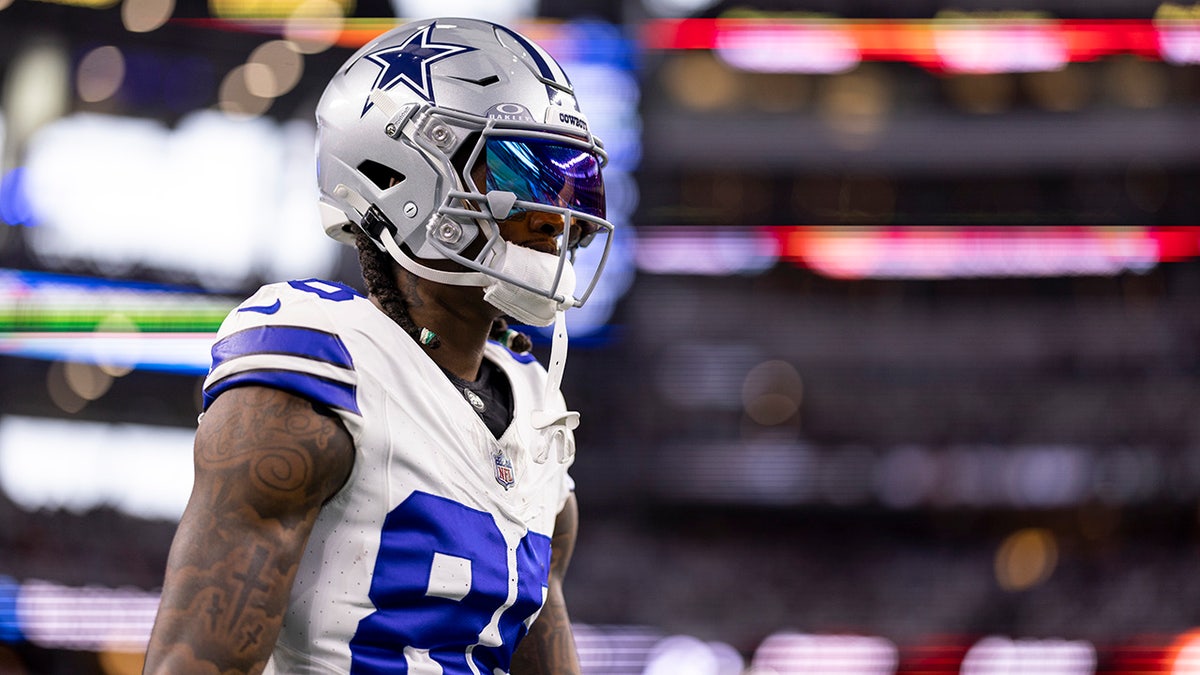
CeeDee Lamb #88 of the Dallas Cowboys looks on as he warms up prior to an NFL wild-card playoff football game between the Dallas Cowboys and the Green Bay Packers at AT&T Stadium on January 14, 2024, in Arlington, Texas. (Michael Owens/Getty Images)
Lamb hasn’t expressed interest in signing the Cowboys’ latest extension offer, which is believed to be around $33 million per year, NFL Media reported. That number would only trail Minnesota Vikings star Justin Jefferson for the highest annual salary for an NFL receiver ($35 million).
Meanwhile, there is also uncertainty surrounding the contract status of quarterback Dak Prescott, who is entering the final year of his contract, which is set to give the Cowboys a $55.1 million cap hit in 2024.
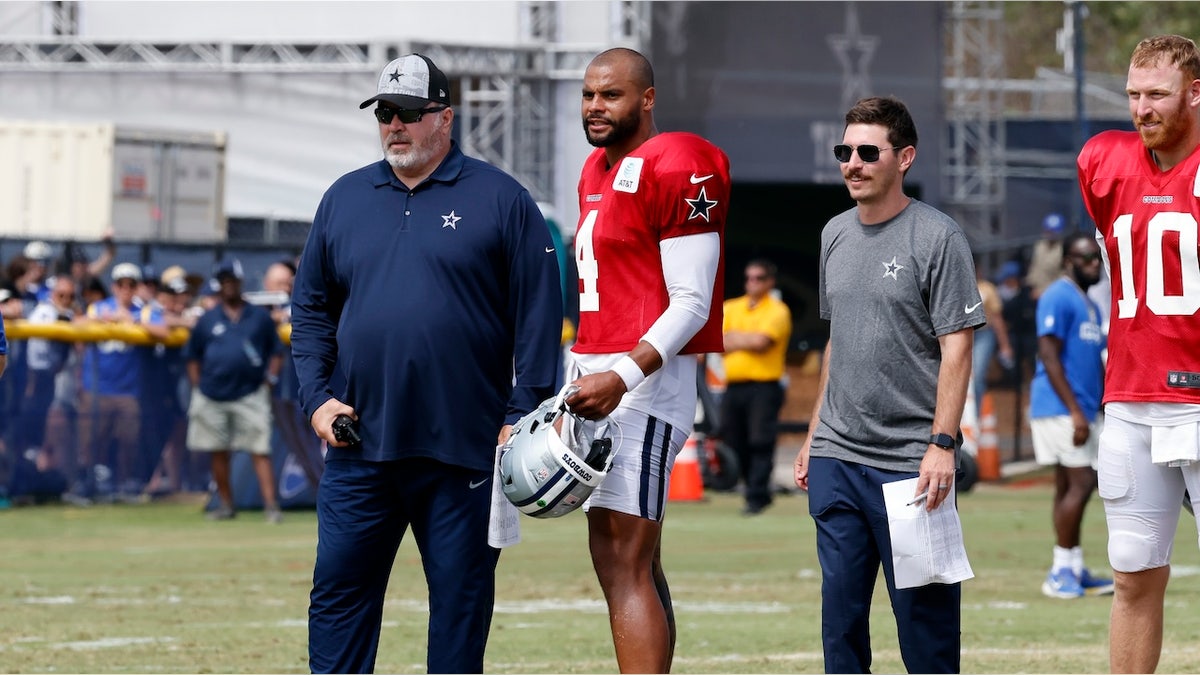
Head coach Mike McCarthy of the Dallas Cowboys and quarterback Dak Prescott look on during a joint practice with the Los Angeles Rams at training camp on August 8, 2024, in Oxnard, California. (Kevork Djansezian/Getty Images)
Issues have arisen with the Cowboys’ lesser-known players as well during camp. Veteran defensive tackle Albert Huggins was recently condemned and reprimanded by head coach Mike McCarthy after the 305-pound tackle knocked an intern on the Rams staff to the ground during a joint practice earlier this week.
Defensive tackle and former first-round pick Mazi Smith did suit up for Dallas’ second preseason game against the Las Vegas Raiders on Saturday. Smith suffered an allergic reaction on Friday during training camp and has been receiving treatment, the team said in a release.
The Associated Press Contributed to this report.
Follow Fox News Digital’s sports coverage on X, and subscribe to the Fox News Sports Huddle newsletter.

Sports
World No 1 Jannik Sinner penalised after twice testing positive for banned substance

Jannik Sinner, the men’s tennis world No 1, has received an anti-doping sanction after twice testing positive for a banned substance. An independent tribunal has ruled that Sinner bears “no fault or negligence” for both positive tests, but Sinner has been stripped of his ranking points, prize money, and results from the BNP Paribas Open at Indian Wells in March.
An in-competition test at that tournament on March 10, 2024 detected an adverse analytical finding (AAF) for clostebol, a banned anabolic steroid which is a non-specified substance on the World Anti-Doping Agency (WADA) prohibited list. A second test, conducted out of competition on March 18, also detected a metabolite of clostebol.
The first sample was recorded at 76pg (picograms) per millilitre. The second was recorded at 86pg per millitire. One picogram is equal to one trillionth of a gram.
The benchmark sanction should a player be found at fault for violations of this nature is four years of ineligibility.
As a non-specified substance, an AAF for clostebol carries a mandatory provisional suspension from tennis. Sinner appealed against that suspension on both occasions, and so was allowed to continue to play, and rise to the top of the tennis world, as the investigation into whether he intentionally took the banned substance unfolded. He won the Cincinnati Masters title on Monday.
An independent tribunal appointed by Sport Resolutions, a private firm that often oversees doping cases, approved lifting both suspensions.
The International Tennis Integrity Agency (ITIA) investigation concluded with a hearing, also overseen by Sport Resolutions, on August 15. At that hearing an independent tribunal ruled that Sinner bore “no fault or negligence” for the two violations of the Tennis Anti-Doping Program (TADP). The Italian admitted both violations, and is able to continue to play as he has done since the tests were conducted.
In separate announcements Tuesday, ITIA and Sinner’s team said that the Italian had tested positive for low levels of the anabolic steroid, once used as part of the notorious East German state-sponsored doping regime in the 1960s and 1970s.
Sinner’s team and the ITIA stated that he cooperated fully with the investigation.
The ITIA investigation concluded that an over-the-counter healing spray containing clostebol had been brought to Indian Wells by Sinner’s physiotherapist, Umberto Ferrara. Ferrara acquired the spray, under the brand name Trofodermin, in February.
Sinner’s physiotherapist, Giacomo Naldi, then cut himself using a scalpel that he used to treat callouses on Sinner’s feet at the tournament. Naldi used the spray to treat the cut, and according to the full decision of the tribunal, “did not check the contents of the spray or see that present on the label of the canister was “clostebol.”
The physiotherapist then conducted massages and treatments on Sinner between March 5 and March 13. According to Sinner’s team statement, “the physiotherapist treated Jannik and his lack of care coupled with various open wounds on Jannik’s body caused the contamination.”
In the full decision published by the ITIA, Professor David Cowan, a scientific expert commissioned to review Sinner’s explanation, commented on the amounts of clostebol found in Sinner’s samples.
“Even if the administration had been intentional, the minute amounts likely to have been administered would not have had […] any relevant doping, or performance enhancing, effect upon the player.”
Sinner lost to Carlos Alcaraz in the semifinals of Indian Wells, and did not learn of the positive test until April — after winning the Miami Open. He was provisionally suspended between April 4 and April 5, and April 17 and April 20, according to the full decision in the tribunal published by the ITIA Tuesday.
“I will now put this very challenging and hugely unfortunate period behind me,” Sinner said.
“I will continue to do everything I can to ensure I continue to comply with the ITIA’s anti-doping programme and I have a team around me that are meticulous in their own compliance.”
Sinner loses 400 ranking points from Indian Wells (George Walker/Icon Sportswire via Getty Images)
Clostebol, which is considered a weak steroid compared with other performance enhancing drugs, can help build muscle and assist in the recovery process following an intense workout, allowing athletes to train harder. It is also found in various therapeutic creams available without prescriptions in various countries.
Jamie Singer, a lawyer for Sinner, described the Italian as the latest athlete to fall victim to the mistakes of his team, and said that the ITIA did not challenge his claim of innocence in regards to intentionally taking a banned substance.
“Under the rules he is responsible for his team members’ mistakes and those mistakes sadly led to the positive test,” Singer said.
Italian tennis players have previously tested positive for clostebol. Matilde Paoletti and Mariano Tammaro, both 17-years-old at the time, tested positive in 2021 when anti-doping was under the jurisdiction of the International Tennis Federation (ITF), according to a report in Honest Sport.
Both players were subject to a mandatory provisional suspension, because their results were AAFs. Neither player was nor is anywhere near close to the notoriety of Sinner, whose test was conducted in the weeks following a decision against the ITIA from the Court of Arbitration for Sport (CAS) in the most recent high-profile anti-doping case in tennis: that of former Grand Slam champion Simona Halep.
The ITIA had sought a six-year ban against the Romanian, having provisionally suspended her in October 2022, after she tested positive for roxadustat.

Halep returned to the tour in Miami in 2024 (Megan Briggs/Getty Images)
Halep argued that she had inadvertently ingested it through a tainted supplement her coaching team, including Patrick Mouratoglou, had recommended. CAS ruled that on “the balance of probabilities” Halep’s anti-doping violations were “not intentional.” It reduced her four-year ban to nine months — about half the time she had already served after her provisional suspension.
The Halep case sparked widespread demands from players and tennis officials for reform, as well as criticism of the ITIA’s prolonged investigation. Halep’s former coach, Darren Cahill, who now coaches Sinner, called for “false accusations and false narratives” around Halep’s case to stop in a now-deleted post on X in March.
The ITIA administers some 2,500 tests each quarter to tennis players of varying abilities and ages, though higher-ranked players are subject to the most testing. Tests take place during tournaments and out-of-competition, with players having to state their exact whereabouts for one hour each day, to allow for the ITIA to subject them to random blood and urine tests.
(Top photo: Minas Panagiotakis/Getty Images)
Sports
Jason Heyward's pinch-hit, three-run homer lifts Dodgers past Mariners
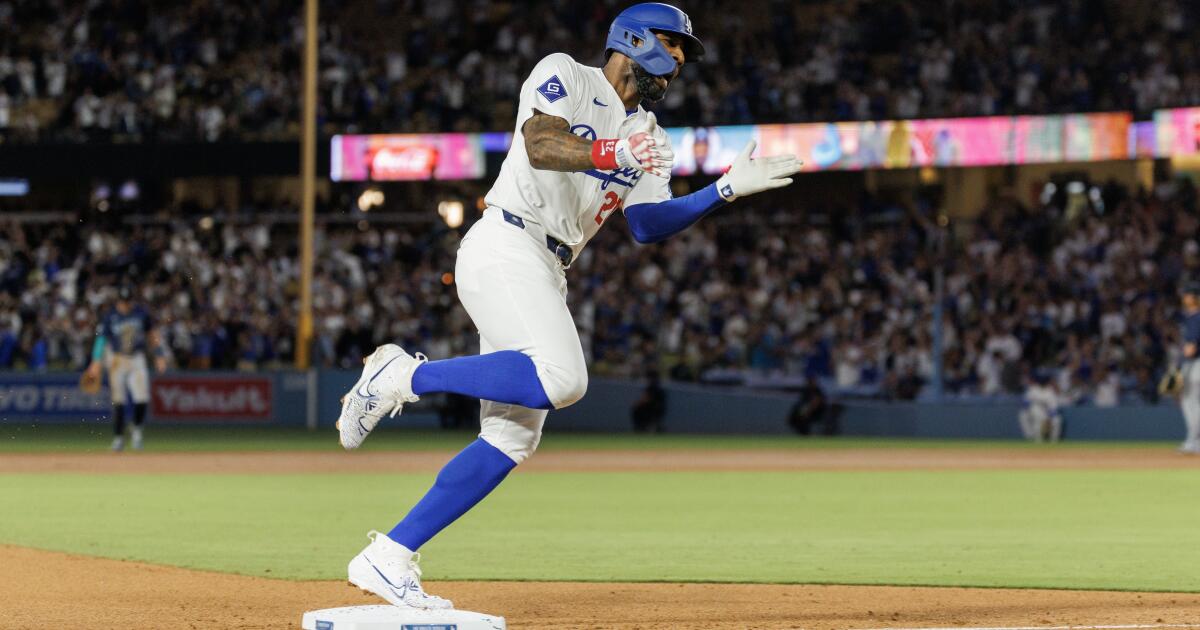
Jason Heyward hammered a pinch-hit three-run home run to right field in the bottom of the eighth inning Tuesday night to break a tie score and lift the Dodgers to a 6-3 victory over the Seattle Mariners before a crowd of 48,395 in Chavez Ravine.
The third pinch-hit homer of his 15-year career may have also helped save Heyward’s job with the Dodgers, who will soon have to decide who utility man Chris Taylor replaces when he comes off the injured list, with Heyward, outfielder Kevin Kiermaier and utility man Kiké Hernández the most vulnerable players.
The score was tied 3-3 when Will Smith was hit by a pitch with one out in the eighth and Max Muncy walked. Tommy Edman struck out, but Heyward turned viciously on a 99-mph fastball at the top of the zone from Mariners reliever Anthony Munoz and sent a 108-mph laser over the short wall in right for a 6-3 lead.
The Dodgers had trimmed a 3-0 deficit to 3-2 when Gavin Lux and Muncy each hit solo homers in the fourth, Lux sending a 390-foot shot to center field to continue his torrid one-month stretch and Muncy driving a 407-foot shot to the back of the right-field bullpen for his second homer in two games since returning from an oblique strain.
Lux was batting .211 with a .556 on-base-plus-slugging percentage, three homers, eight doubles and 24 RBIs in 79 games through July 19. In 29 games since, the second baseman hit .372 (35 for 94) with seven homers, 10 doubles and 21 RBIs, raising his season average to .254 and his OPS to .713.
The Dodgers tied the score 3-3 in the seventh when Edman led off with a double to right-center and scored on Mookie Betts’ clutch two-out RBI double to left.
Freddie Freeman was walked intentionally, and Teoscar Hernández lined a single to right field, but Seattle outfielder Mitch Haniger air-mailed a throw to catcher Cal Raleigh in time to nail Betts at the plate to end the inning.
Five Dodgers relievers — Alex Vesia, Ryan Brasier, Anthony Banda, Joe Kelly and Daniel Hudson — combined to give up only one hit in five scoreless innings behind struggling starter Walker Buehler, as the Dodgers maintained their National League West lead of three games over San Diego and four games over Arizona.
Buehler needed three pitches to record two outs and 79 pitches to get 10 more, which is a pretty good indication of how Tuesday night went for the right-hander, who is struggling to find some semblance of his pre-surgery form.
Buehler labored through a four-inning, three-run, seven-hit, 82-pitch start in which he struck out one, walked three and struggled with his command, his second straight shaky outing since returning from a right hip injury last week.
Buehler returned from his second Tommy John surgery in early May and went 1-4 with a 5.84 ERA in eight starts in which he gave up 10 homers in 37 innings. He hurt his hip in mid-June and spent several weeks of his two-month absence at a private training facility in Florida in an effort to “get those feels back.”
But when he returned in Milwaukee on Aug. 14, he needed 87 pitches to record 10 outs in a 3 ⅓-inning effort in which he gave up four runs — three earned — and four hits, struck out three, walked four and threw first-pitch strikes to seven of 17 batters in a 5-4 loss.
“I think what I’m looking for tonight is strike one,” manager Dave Roberts said before the game. “It’s no secret that when a pitcher gets ahead in the count, he has a lot more success. If he can get [his first-strike rate] somewhere around 60%, it’s going to be an easier path for him.”
Buehler actually did a better job of getting ahead in counts, throwing first-pitch strikes to 14 of the 21 batters he faced, but six of those at-bats in which he threw first-pitch strikes ended with hits or walks.
After giving up a two-out double to Raleigh and walking Luke Raley and Randy Arozarena to load the bases, he jumped ahead of Jorge Polanco with an 0-and-2 count. Polanco then lined a 1-2 sinker into right field for a two-run single and a 2-0 lead.
With two on and one out in the third, Buehler got ahead of Polanco again with an 0-2 count. Polanco drove a 1-2 changeup to left-center field for an RBI double and a 3-0 lead.
Buehler did well to limit damage in the third, getting Haniger on a tapper in front of the plate and Josh Rojas to ground out to first with runners on second and third to end the inning.
Buehler gave up one hit in a scoreless fourth, an inning in which he barked at plate umpire CB Bucknor about a borderline pitch to Julio Rodriguez that was called a ball, but his pitch count was too high to start the fifth.
Short hops
Yoshinobu Yamamoto, out since June 16 because of a rotator cuff strain, is scheduled to throw to hitters in a two-inning simulated game on Wednesday. Roberts said the right-hander will need one more simulated game session of three innings before going on a minor league rehabilitation assignment. … The Dodgers pushed reliever Blake Treinen’s return from the injured list from Tuesday night to Wednesday night in order to retain long-reliever Ben Casparius for one more game.
Sports
How SLAM magazine went from NBA 'outcast' to a Hall of Fame publication in 30 years

At a recent celebration, members of SLAM magazine’s staff, past and present over the last 30-plus years, couldn’t believe it.
The Hall of Fame. Really? SLAM in the Hall of Fame?
Founder Dennis Page and the publication were honored by the James Naismith Memorial Basketball Hall of Fame with the Curt Gowdy Transformative Media Award during a ceremony in August. To some, this seemed impossible back in May 1994, when the first issue — featuring Larry Johnson on the cover — was released.
Thirty years ago, SLAM was unlike anything in modern journalism. It didn’t play by traditional rules. Profanity in publication was not off-limits. The writers and editors didn’t pretend to be impartial.
“‘Outcast’ is a good word for us,” said Tony Gervino, the magazine’s first editor-in-chief who now works at Tidal as executive vice president and editor-in-chief.
SLAM was part of a culture shift that personified a time when the NBA was changing, a time when hip-hop began crafting the style of many players. The shorts were longer and baggier. Pregame music playlists were more likely to include Wu-Tang Clan or Snoop Dogg instead of R&B crooners like Jeffrey Osborne or Luther Vandross. Tattoos became as common as high-top shoes.
And there was SLAM, something of a disruptor itself by championing the voice of the fan. Inspired by hip-hop magazine The Source, SLAM’s vibrant photography and style of storytelling connected with a younger audience that cared about the shoes players wore just as much as the final score of games.
The result? More than 300 million magazines have been sold since 1994. There have been 132 covers to feature a Hall of Famer.
SLAM magazine’s production stats are showcased at the 30th anniversary exhibit at the James Naismith Memorial Basketball Hall of Fame. (Bob Blanchard / SLAM)
SLAM didn’t act like traditional media — nor did it want to be. It resonated so much that others eventually tried to emulate it. It was quite the shift, considering early on the New York City publication had trouble getting media credentials for NBA coverage.
“We were really on the outside of the party looking in, and we just told people the party sucked,” Gervino said. “That’s why we were on the outside. We got into it, then we sort of roughed it up a bit.”
Page, in addition to being a big sports fan, has a huge appreciation for music. He was the publisher of Guitar World magazine when he became impressed at how The Source had captured the attention of the hip-hop generation.
Page believed the world didn’t need another magazine focused on rap, as there were plenty on the market. What he hadn’t seen was a publication that merged culture and sports.
“There were people all over the world, young kids that were into hip-hop, into basketball,” Page said. “But Sports Illustrated, Street & Smith didn’t speak to them. When we came out, we spoke to them.”
Fans accepted SLAM — and then the players became fans. The magazine covers became popular. Whether it was Kevin Garnett and Stephon Marbury showcasing their lavish jewelry or Allen Iverson getting featured in his Sixers jersey with his hair in an Afro rather than his usual braids, SLAM struck a nerve.
“We were just living it, and we wrote about basketball and referred to hip-hop music and lyrics. This was who we were,” Page said. “We weren’t a corporate publishing house, so we were just writing the magazine for ourselves.
“Honestly, I had no idea there were that many people in the world that would understand this and accept it and really appreciate it.”
Thirty years after its introduction, SLAM was honored with one of basketball’s most prestigious media awards. Success, however, might not have worked without the freedom the staff was given. That meant nontraditional journalism tactics such as giving space to the sneaker world, featuring player diaries and serving as a means to connect basketball fans globally before the internet.
It led to engaging content.
“First of all, we didn’t know any better,” said former SLAM writer and editor Lang Whitaker, who has worked for the NBA and GQ magazine and currently works for the Memphis Grizzlies. “We were just making stuff that we thought was cool, and I think that’s why it resonated.
“For better or worse, there wasn’t a lot of oversight. Nobody was telling us what to be like. Dennis just let us do our thing and let us kind of rock.”
No writer personified the SLAM style in its early days more than Robert “Scoop” Jackson.
“The most important person in SLAM history is Scoop,” Gervino said. “He literally launched a generation of writers and kids who said, ‘I can do that now.’”

Robert “Scoop” Jackson was one of the most respected journalists during SLAM’s early days. (David Zalubowski / Associated Press)
Jackson’s distinctive style of reporting allowed him to connect with NBA players in a way that was different yet welcomed. The Chicago native was closer to the players’ ages, and he had an eye for talent and trends. He wrote about Iverson being the future of basketball before he was in the NBA after watching Iverson play in a summer league while still at Georgetown.
Jackson, who is now a columnist for the Chicago Sun-Times, wanted to tell in-depth stories. He wanted to write about Chicago’s Ben Wilson, the Simeon High School prospect regarded as the top high school player in America who was shot and died in November 1984.
Editors at SLAM weren’t familiar with Wilson’s story. That gave Jackson more urgency to tell it — even if it happened nearly 10 years after Wilson’s death.
“We did a human interest story that was rooted in the culture of basketball and what the future of basketball could have been,” Jackson said. “But that future of basketball never got a chance to live. To me, once you go there, that’s the foundation of how you’re going to deal with telling the story about the culture of basketball.”
Jackson was a staple at SLAM for 11 years. Though an NBA presence often made the cover of most issues, stories like Wilson’s were the soul of the publication.
“Tony and I looked at Dennis as that White guy who really understood Black culture,” Jackson said. “He understood the game of basketball wasn’t just about the NBA.”
That mindset led SLAM to take a chance on writing about Iverson before he made it to the NBA. It also allowed them to lean more into writing about the culture and lifestyle of those in basketball, such as the story of streetball legend Rafer Alston, who, while at Fresno State, was featured in the magazine as “The Best Point Guard in the World.” It also meant finding high school standouts and profiling women who were stars in the game.
One story Jackson fondly recalls is a 1997 profile of Dawn Staley, the former star point guard at Virginia, six-time WNBA All-Star and three-time Olympic gold medalist who now is the coach of the reigning women’s college basketball champion South Carolina Gamecocks. Jackson simply hung out with her in her native Philadelphia, visiting her old neighborhood and the courts she played on while learning more about her as a person.
This piece wasn’t about Staley’s time with Team USA, and the WNBA hadn’t officially started (the first WNBA game took place June 21, 1997). Instead, the story was about the men she played against growing up and what the city of Philadelphia meant to her.
“It had nothing to do with her professional career, nothing to do really with what she did at Virginia,” Jackson said. “We told the ’hood story of Dawn Staley.”
The importance of Iverson cannot be understated. Jackson said he and Page disagreed on what to do with Iverson. At the time, a non-NBA player had not graced the cover. Iverson still was at Georgetown but had won Big East Defensive Player of the Year as a freshman while averaging 20.4 points.
A lot of basketball fans weren’t familiar with Iverson as a player. Some had heard about him as a prep star who was arrested during a fight at a bowling alley. Jackson believed it was important to write about who Iverson was and his basketball journey, not just what had made headlines off the court.
“Part of the foundation of our responsibility was telling the cultural side of basketball first, and then can it connect to the NBA second,” Jackson said. “But it wasn’t just Iverson. Even though his name gave it prominence, it was us doing the story.”
Jackson said Michael Jordan was also important to SLAM. Page wanted Jordan to be on the cover of the first edition, but he retired after the 1993 season. Instead, the cover went to Johnson.
Jackson said SLAM covered Jordan’s return to the league based on what he meant to the culture of basketball. It also helped that Jordan wasn’t fond of Sports Illustrated, which had famously used its cover to tell him to give up playing baseball.
Jordan opened up to Ahmad Rashad from NBC, but the network was still part of the NBA’s media machine.
“We were told Jordan stories differently than anybody else. None of our Jordan stories were like anything anybody else was writing,” Jackson said. “We were able to build a relationship with him, and he felt comfortable with us in a way that he didn’t feel with anybody else.
“We talked to him about things dealing with just his approach to the game of basketball and his contribution to the game of basketball from a cultural perspective. So, I think that carried as much weight as our journalistic relationship with Allen Iverson.”
Jordan’s first SLAM cover was in July 1995. He ended up doing 13 covers in the magazine’s 30 years — including three of the first 19 issues.
Hip-hop was a little more than 20 years old at the time, and by the 1990s, it was playing by its own rules. From fashion to subject matter, the music pushed a new culture forward.
The writers at SLAM did the same. Page credits Jackson for being a big part of SLAM’s emergence. Jackson was a young Black writer in locker rooms, and for some players, that wasn’t the norm. Like many of the players he covered, Jackson was a part of a generation that grew up on hip-hop, and he was interested in telling players’ stories in a different way.
“He was a young, great writer, and he understood (the players) as a person,” Page said. “We were inside out as opposed to trying to be objective, passing judgment, which journalism can do. We were kind of one of them. It’s really not that complicated or that deep, looking back.”
SLAM’s culture was heightened with the assistance of visuals.
The magazine has produced some of the most unforgettable cover photos in basketball. One reason the magazine is still printed is the covers that become T-shirts. Page said SLAM had a deal with clothing brand Mitchell & Ness that allowed it to make T-shirts out of certain magazine covers.
The covers, many with hip-hop references, were memorable for players. NBA Hall of Famer Shaquille O’Neal said he doesn’t remember all the SLAM covers he was featured in, but when shown a few, one caught his attention.
“I remember that one,” he said, identifying the September 2000 issue that had “Victorious BIG” in the background. It celebrated O’Neal’s first championship with the Los Angeles Lakers.
The basketball connection is clear, but the title also is a play off the name of one of O’Neal’s favorite rappers: The Notorious B.I.G.
“This one is my favorite,” he said.
SLAM didn’t turn to traditional basketball photographers for its covers. It went to professionals like Atiba Jefferson, who has a background in skateboarding. It also went to Jonathan Mannion, who made his name as a photographer in the music industry.
Mannion has shot album covers for several hip-hop and R&B stars, including Jay-Z, DMX, DJ Khaled, Lil Wayne, Rick Ross, E-40 and Aaliyah. Working with SLAM was a new test, but a welcomed one.
“As far as execution, they really set me free,” Mannion said. “I loved working with this level of athletes. … I always kind of enjoyed (SLAM shoots), but I was there to tell an authentic story, too.”
One of those opportunities was shooting Chamique Holdsclaw when she was a star at the University of Tennessee. Holdsclaw was the first woman to grace the cover of SLAM.
Holdsclaw became a fan of the magazine as a preps star at Christ the King High School in New York. After she dominated the college circuit, SLAM asked her whether she would be the first woman to play in the NBA.
The Tennessee standout then was told to return to New York, where Mannion — whom she dubbed “the Hip-Hop Photographer” — would be behind the camera.
Holdsclaw’s groundbreaking cover — her wearing a New York Knicks uniform for SLAM’s September 1998 issue — is one she’s still asked to autograph.
“(When) I got there, it was, like, the dopest photo shoot that I’ve ever done,” Holdsclaw said. “Jonathan was just coming up with ideas. He was like, ‘They want you to wear this.’”
Holdsclaw’s cover and photo shoot captured so much that defined SLAM. It was edgy and forward-thinking. Even her stance and gear were hip-hop in style.
“I looked at that Knicks jersey, and I was like, ‘Oh, this is good,’” she said.
One of SLAM’s most popular covers is the Class of 1996 double cover that featured rookies from the ’96 NBA Draft class. Future Hall of Famers Kobe Bryant, Ray Allen and Steve Nash are part of that crew, along with future All-Stars like Marbury and Shareef Abdur-Rahim.
Former Syracuse star John Wallace was a rookie with the Knicks during the 1996-97 NBA season. He said that class, highlighted by Iverson and Bryant, brought a hip-hop mindset to the NBA.
“You always hear this narrative: Rappers want to be basketball players; basketball players want to be rappers,” Wallace said. “But that was because of us and our era, what we ushered in. They weren’t saying that about the Michael Jordan (era) guys. They weren’t listening to rap and hip-hop like we were.”
Ben Osborne worked at SLAM for more than 18 years, the last 10 as editor-in-chief. He said the importance of sneakers in SLAM’s staying power cannot be overstated. It’s now common for shoes to receive media attention. That wasn’t always the case.
Shoe companies recognized that, too. Their support via ads helped keep things afloat. Reebok and Foot Locker were among the early companies that supported with advertising.
SLAM eventually would dedicate entire issues to shoes, KICKS. Now, some journalists exclusively cover shoes.
“We knew the biggest sneaker companies in the world were going to support an issue every single month,” Osborne said. “That just took a little bit of weight off. They weren’t starting from scratch every month to get people to support it. I think that, that made us cover sneakers more. Fans liked that even more because we were doing it differently than other places.”
SLAM has evolved in the social media era by continuing to lean into culture. Fashion is a big part of that. SLAM has an Instagram account, LeagueFits, which has more than 1 million followers.

SLAM has seen significant growth in its 30 years of existence. The Hall of Fame exhibit serves as proof. (Bob Blanchard / SLAM)
Adam Figman started at SLAM as an intern in 2010. He’s now a former editor-in-chief and chief content officer who took over as the company’s CEO in April. He said the social media accounts and the cover T-shirts have been key in keeping the magazine’s place in the basketball culture.
Even as players post their own photos on social media, something still resonates with them about a cover shoot for a magazine. For players like Holdsclaw, Cooper Flagg and Zion Williamson, appearing in SLAM as prep phenoms is different.
“Everyone wants to be on a cover, because anyone can post a photo of themselves,” Figman said. “Any basketball player can say, ‘Here’s what I look like. Here’s a cool photo of me.’ But a cover is a special moment. It’s a stamp, and a SLAM stamp, to me, is validation. We only do so many covers, so it means something special.”
SLAM’s recognition by the Hall of Fame is an accomplishment for all who worked on the magazine. It’s an honor that shows how impactful SLAM has been. All say the moment remains surreal.
In the end, the outcasts were invited to the party. And they will be recognized by partygoers at the Hall of Fame forever.
(Top photo: Bob Blanchard / SLAM)
-

 Ohio7 days ago
Ohio7 days agoOhio taxpayers sent families $966 million for private school tuition: Capitol Letter
-

 World1 week ago
World1 week agoWhat could an EU Commissioner do to tackle the housing crisis?
-

 News1 week ago
News1 week agoFull Trump-Musk Interview: Assassination Bid, Iran-Israel, Russia-Ukraine, Kamala-Biden, US Election
-
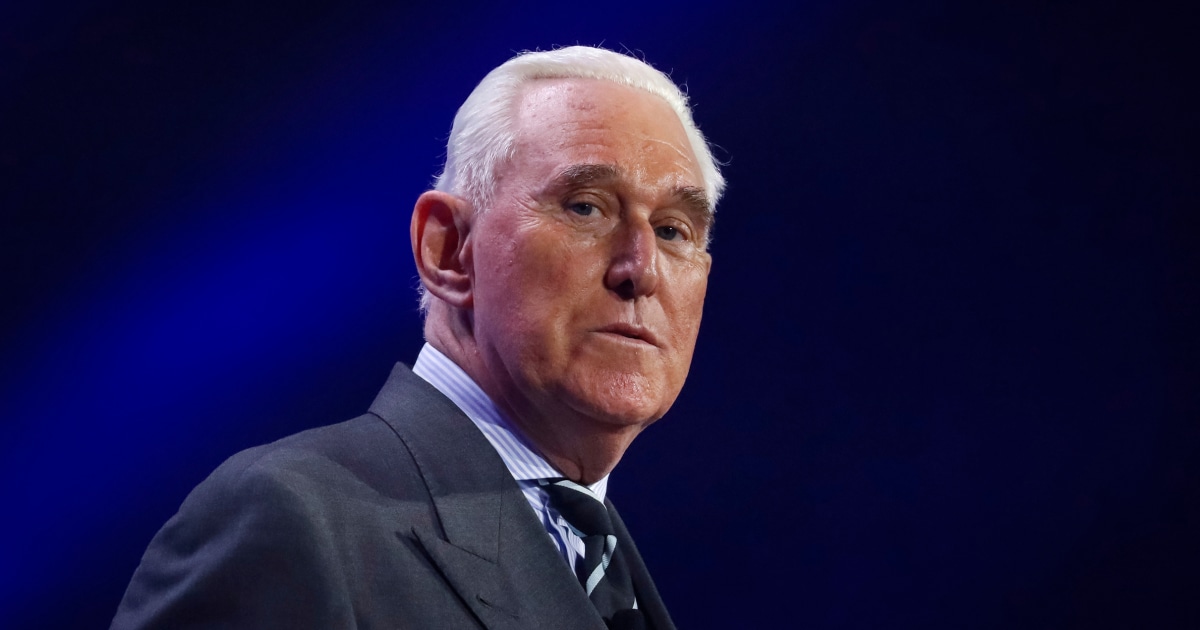
 News1 week ago
News1 week agoRoger Stone says his email accounts were how the hackers got into the Trump campaign
-

 Science1 week ago
Science1 week agoOpinion: A route to safer chemotherapy
-
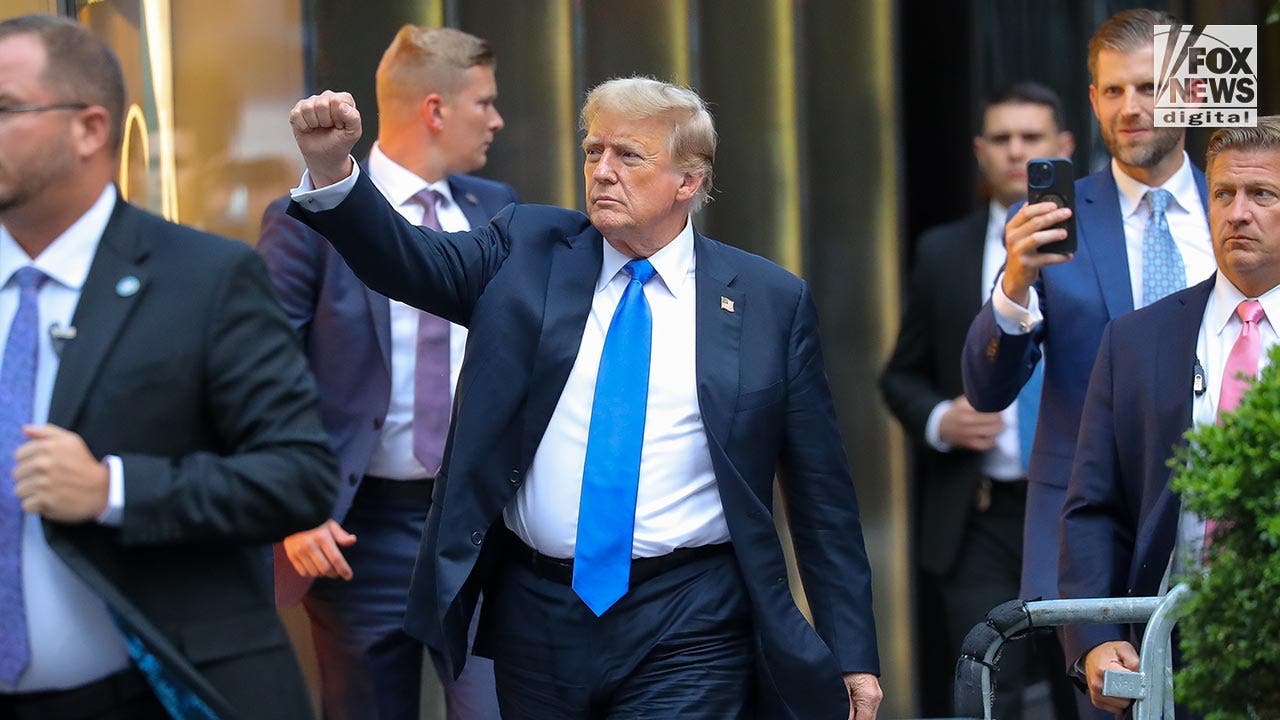
 Politics1 week ago
Politics1 week agoTrump legal cases in limbo after SCOTUS immunity ruling, freeing up schedule to campaign
-

 Politics1 week ago
Politics1 week agoSecret Service apologizes after breaking into Massachusetts salon to use bathroom before Harris fundraiser
-

 World1 week ago
World1 week agoUkraine recieves €4.2 billion from EU as part of recovery plan


